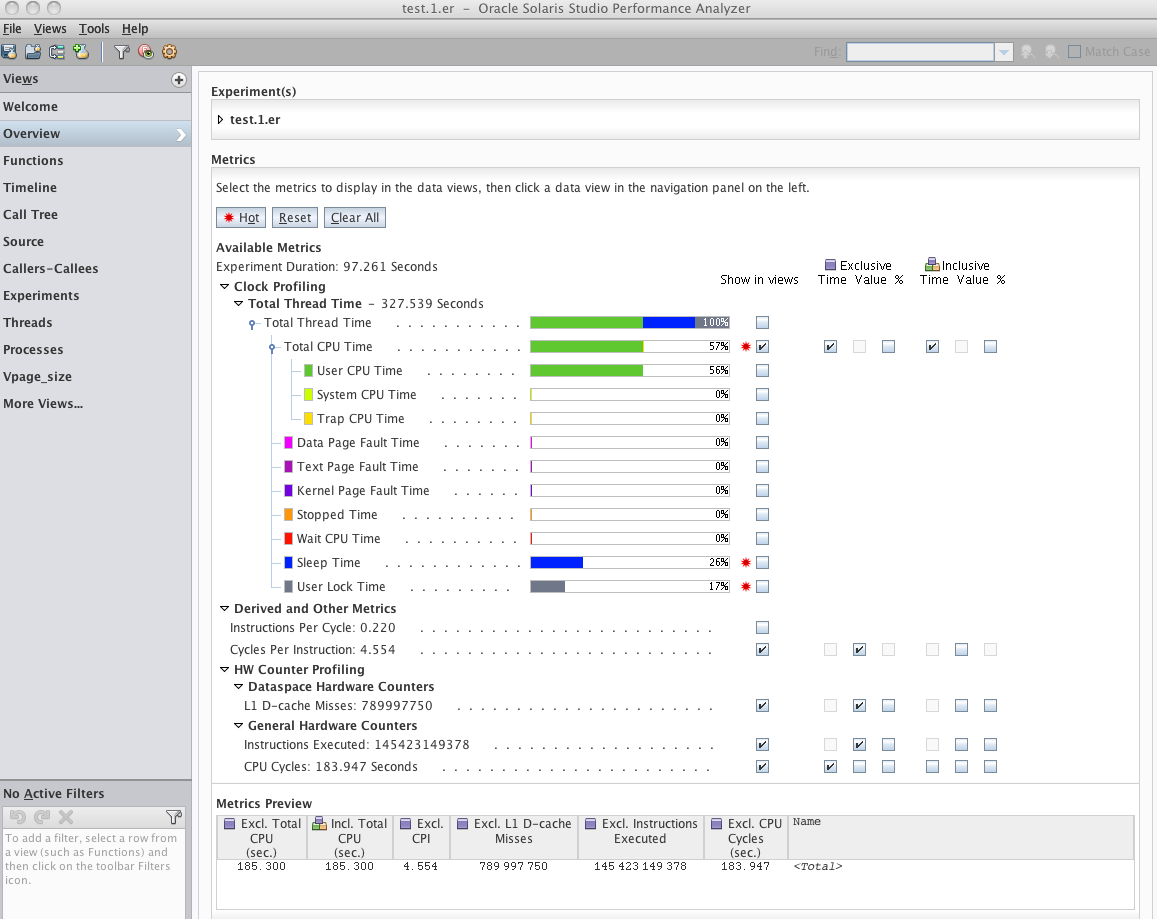Examining the Hardware Counter Profiling Experiment for mttest
This section shows how to explore the data in the experiment you created from the mttest sample code in the previous section.
-
Start Performance Analyzer from the mttest directory and load the experiment as follows:
% analyzer test.1.er
When the experiment opens, Performance Analyzer shows the Overview page.

The Clock Profiling metrics are shown first and include colored bars. Most of the thread time is spent in User CPU Time. Some time is spent in Sleep Time or User Lock Time.
The Derived and Other Metrics group is present if you have recorded both cycles and insts counters. The derived metrics represent the ratios of the metrics from those two counters. A high value of Instructions Per Cycle or a low value of Cycles Per Instruction indicates relatively efficient code. Conversely, a low value of Instructions Per Cycle or a high value of Cycles Per Instruction indicates relatively inefficient code.
The HW Counter Profiling group shows two subgroups in this experiment, Dataspace Hardware Counters and General Hardware Counters. The Instructions Executed counter (insts) is listed under General Hardware Counters. If the data you collected included the cycles counter, CPU Cycles is also listed under General Hardware Counters. If the data was collected on a machine with a precise dcm counter, L1 D-cache Misses is listed under Dataspace Hardware Counters. If the dcm counter was available but is not a precise counter, L1 D-cache Misses is listed under General Hardware Counters. A precise counter is one whose overflow interrupt is delivered at the execution of the instruction causing the overflow. Non-precise counters are delivered with a variable amount of "skid" past the instruction causing the overflow. Even if a non-precise counter is memory-related, it cannot be used for dataspace profiling. For more information about dataspace profiling, see Dataspace Profiling and Memoryspace Profiling in Oracle Solaris Studio 12.4: Performance Analyzer .
If your system does not support dcm, and you edited the Makefile to remove the –h dcm, you will see the Instructions Executed and CPU Cycles counter. If you edited the Makefile to remove both the –h dcm and –h cycles, you will only see the Instructions Executed counter.
You will explore these metrics and their interpretation in the following sections of the tutorial.